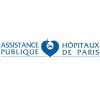Clearance of Asymptomatic Pharyngeal Carriage of Neisseria Gonorrhoeae With or Without Ceftriaxone Treatment: Randomized Non-inferiority Study (PORTAPHAR)
Neisseria Gonorrhoeae Infection, Asymptomatic Pharyngeal Carriage

About this trial
This is an interventional other trial for Neisseria Gonorrhoeae Infection
Eligibility Criteria
Patients (n=154): Patient inclusion criteria : Adult patient (age ≥ 18 years old) Patient consulting for a pharyngeal Neisseria gonorrhoeae Sexually Transmitted Infection (STI) and meeting the following criteria : Positive sample for NAAT by PCR in the pharynx for Neisseria gonorrhoeae dating back a maximum of 7 days (the date of the sample and those of inclusion will be compared) and asymptomatic patient Absence of symptoms of other bacterial STIs or other asymptomatic bacterial STIs confirmed on the systematic screening assessment carried out within 7 days before inclusion Patient's agreement to use protection or abstinence from all oral sex for 3 months follow-up (experimental group) or for 7 days (control group) For men whose female partner(s) are of childbearing age and for women of childbearing age: use of effective contraception (failure rate less than 1% per year) throughout research Patient benefiting from a social health security scheme Patient having signed a free and informed consent Patients non-inclusion criteria : Minor patient Symptomatic patient in the pharynx Presence of symptoms of another bacterial STI or of an asymptomatic bacterial STI confirmed on the screening report carried out within 7 days before inclusion Antibiotic treatment that may be active on Neisseria gonorrhoeae (C3G, Fluoroquinolones, Macrolides, Cyclins, Aminosides, Penicillins) within 14 days before inclusion Hypersensitivity to ceftriaxone, other cephalosporins or to any of the excipients History of severe hypersensitivity (e.g. anaphylactic reaction) to another class of antibacterial agents of the beta-lactam family (penicillins, monobactams and carbapenems). Contraindication to ceftriaxone Contraindication to intramuscular injections Person under legal protection, under guardianship or curatorship, person deprived of liberty, under safeguard of justice, subject to psychiatric care, under duress, admitted to a health or social establishment for purposes other than those of research Pregnant or breastfeeding woman Lack of social health insurance Patient included in another interventional study Partners (n=100) : Partner Inclusion Criteria : Sexual contact of the index case (genito-anal or genito-vaginal, oro-genital or oro-anal or oro-oral relations) in the month preceding the inclusion of the index case Adult patient (age ≥ 18 years old) Patient benefiting from a social health security scheme Patient having signed a free and informed consent Partner non-inclusion Criteria: Minor patient Person under legal protection, under guardianship or curatorship, person deprived of liberty, under safeguard of justice, subject to psychiatric care, under duress, admitted to a health or social establishment for purposes other than those of research Patient included in another interventional study Pregnant or breastfeeding woman
Sites / Locations
Arms of the Study
Arm 1
Arm 2
Experimental
Active Comparator
Patients : Absence of antibiotic treatment
Patients : Ceftriaxone
Outcomes
Primary Outcome Measures
Secondary Outcome Measures
Full Information
1. Study Identification
2. Study Status
3. Sponsor/Collaborators
4. Oversight
5. Study Description
6. Conditions and Keywords
7. Study Design
8. Arms, Groups, and Interventions
10. Eligibility
12. IPD Sharing Statement
Learn more about this trial
